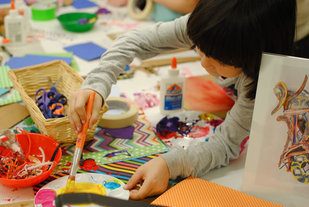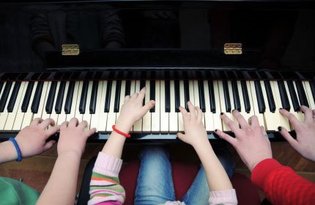|
It’s Springtime. Birds are chirping. Crocuses are blooming. Flurries are in the air. Oh wait, what? Flurries?! Oh right, we live in Nova Scotia.
Springtime can mean fresh, new beginnings. A clean slate. A change. A new start. It means looking forward to warmer weather and summertime soon ahead. The school year is starting to see the end, snow pants are being left at home, and fun lunch ideas are running out. Sound familiar? Suddenly, you are flooded with Facebook ads, videos, and flyers promoting independent schools who are ‘enrolling now for September’. You think, September!? I’m just beginning to see the end of one school year! I can’t think of the next one, already! If you’re seeing it on your newsfeed, you may already have shown an interest, considering an alternative school for your child. You’ve browsed the websites, narrowed down your search perhaps; you may have even come in for a tour. The fall just seems eons away. Lots of time to decide. Besides, you want to wait until classes start to take shape, or at least wait until the current school year ends. Why enrol so early? Well, the automatic assumption might be money. The school would love to collect deposits as soon as possible to purchase supplies needed for the following year. Makes sense. Or perhaps it’s enrollment, they need to enrol a certain amount to make ends before the end of the school year lull. Also, sounds legitimate. Or perhaps it’s all just a marketing ploy to get as many students as possible by opening enrollment up as early as possible. I mean, after all, private schools are also businesses. A scary thought that education and business could overlap like that, but it could be so, I suppose. However, one reason, or the main reason from our perspective, honestly has nothing to do with finances, enrollment targets, or marketing ploys. The reason is actually quite simple, and more in touch with actual education than you might think. Schools like our own, who’s mission is to focus on the development of each of their students, to remain small, and truly engage its’ students in learning, will thrive on the fact that they get to know their students well. They know their families, they know the students’ strengths, abilities, interests. The teachers can truly teach because they’ve had time to build lasting relationships with each family. They’ve honestly built and designed a learning environment that is catered to the learning styles of their students. Thus, the earlier a student is enrolled, the longer time there is to get to know one another, which in turns creates the best learning environment for the child. See? In tune with education. Right where schools should be, we think. So, if you’ve been considering looking into an alternative school for your child but you’ve been putting it off, take this as just food for thought. Any school that truly dedicates itself to having small class sizes will hopefully stay true to that and actually stop enrolling once they’ve hit their cap. It’s not about money. It’s about education. Good education. Small multi-grade class schools, like our own, will actually stop enrolling altogether, each year, once a school cap is reached because it’s not only important to stay true to small class sizes, but for us, to maintain a low student-teacher ratio within the whole school itself. Something to keep in mind. Next time you see a flyer or ad about enrolling early, stop to consider. If I did apply now, how would that benefit my child’s education for the future? If I waited, how well prepared will the teachers be to work with my child and family, or even, will there be a spot left? Just something to mull over as you watch flurries blowing around outside on this Spring eve. Happy Spring everyone!
0 Comments
Arts-Infused Education sounds fancy, but it's actually quite simple. It's messy, of course, but simple. It often requires a change of clothes, a large space, some loud noise, bright lights (darkness, too), movement, talking, and plenty of expression, but honestly and truly, it's not tricky nor is it difficult to implement. It's probably the most natural way of learning for any child (or adult, for that matter) and the most universal way of representing and expressing information. It connects to our most natural sense and ability that we all have. Most definitely, above all, it reaches to children as they are constantly seeking to learn about the world around them and find out how they fit into it. It connects to the sense of curiosity, a child's ability to express, and their need to explore. What's important to remember is that it's much more than painting and singing. (Although it includes that, too) It's filmmaking, exploring sound, music and theory, creative movement, dramatic forms and theory, sketches and structures, singing and speaking, handcrafting and building - it's endless! Arts-infused education involves getting your hands dirty. Taking risks. Discovering inner emotion. Discovering emotions of others. Gaining perspective. Representing knowledge. Expressing ideas. Problem solving. Moving. Stillness. Listening. Talking. Asking. Yelling. Creating. Education infused with the arts allows students to experience learning in a way that connects to who they are, creating the ultimate hands-on learning environment that works to the benefit of each child. Anything infused with arts, really, has the opportunity to inspire. When education and arts come together, it pulls at a students' inner ability and want to create, share, and explore. No matter their ability, their interests, their uniqueness - anything, especially education, that has the availability and opportunity for creativity to take form WILL reach, and motivate each child. The arts are vast, without limits. There is an endless amount of possibilities for learning, creating, expressing, and exploring ideas and emotions. Infuse the arts into reading, writing, math, science and socials and you've got the winning ticket! There's no limit to the ways to represent knowledge, the ways to express understanding, or the ways to engage each student. Arts-Infused Education offers a way to enhance learning that anything else would be hard pressed to compare. Students gain skills far beyond the textbook, and far beyond the classroom, that will help shape who they grow to be - their character, their personality, their work ethic. Wouldn't you want that for your child? Above all else, here's why we think it's important, and why it's implemented in every grade, for every child. 4 Lifelong Benefits of Arts-Infused Education  Creativity: The process of establishing novel ways to think, learn, and do that are representative of one's ideas, thoughts, and emotions. Students learn who they are, who they want to be, how they learn, how they express themselves, and how they achieve success. Students develop their individuality. They develop skills. They invest in knowledge and want to share their successes. Students create deeper understanding of how things work, as well as, why, where, and when they work. They learn from mistakes, take risks to learn more, and construct new and innovative ideas based on experience, understanding, and knowledge.  Collaboration: The process of working together with others toward a common goal or experience. Students learn patience, empathy, negotiation, and compromise. They learn how to build respect, earn respect, and give respect. They learn the power of diversity and celebration of diverse perspectives. Students gain knowledge from listening, talking, asking questions, and sharing. They try new things, create meaningful experiences, and build concrete understanding of complex issues. They feel emotion, express emotion, and learn to deal with emotion. Students build lasting, hands-on learning experiences that are connected with a sense of togetherness, inclusion, and peer support.  Critical Thinking: The process of using original and complex ideas to ask questions, solve problems, gain understanding, gain perspective, and seek depth. Students develop strategies, ideas, and new concepts. They learn what matters - to them, to others, to the world around them. Students create connections between the world, themselves, and experiences shared between them. They get to the root of the issue. They build strong character traits, work ethic, pride in achievement, and genuine respect for learning. Students apply concepts, manipulate and rediscover ideas and operations, and value the input of others. They seek out information, experiences, and opportunities to learn more about the world they live in.  Communication: The process of effectively expressing, sharing, receiving, and understanding ideas, emotions, thoughts, and concepts. Students are heard. They learn to express their ideas and have others respond. They learn how to connect with others, with learning, with the world. Students discover their self-confidence, find their inner voice, their bravery and strength. They test the boundaries, work wonders with words, find innovative ways to express knowledge, and challenge themselves to new levels of success. Students find value in advice, support, experiences, and constructive criticism. They experiment, explore, play, and reinvent. They learn about themselves, others, and the world around them. Students learn to redefine, manipulate, and explore ways to convey meaning, messages, emotion, and character, and ultimately, prepare themselves well for the future ahead. To learn how we integrate arts with education click here or comment below! |
Welcome to Our BlogEach post is written by a supportive member of Via Vita Academy, be it a teacher, parent, student, community member, who is invested in the topic of education. Take a read and comment below! Archives
February 2022
Categories
All
|





 RSS Feed
RSS Feed